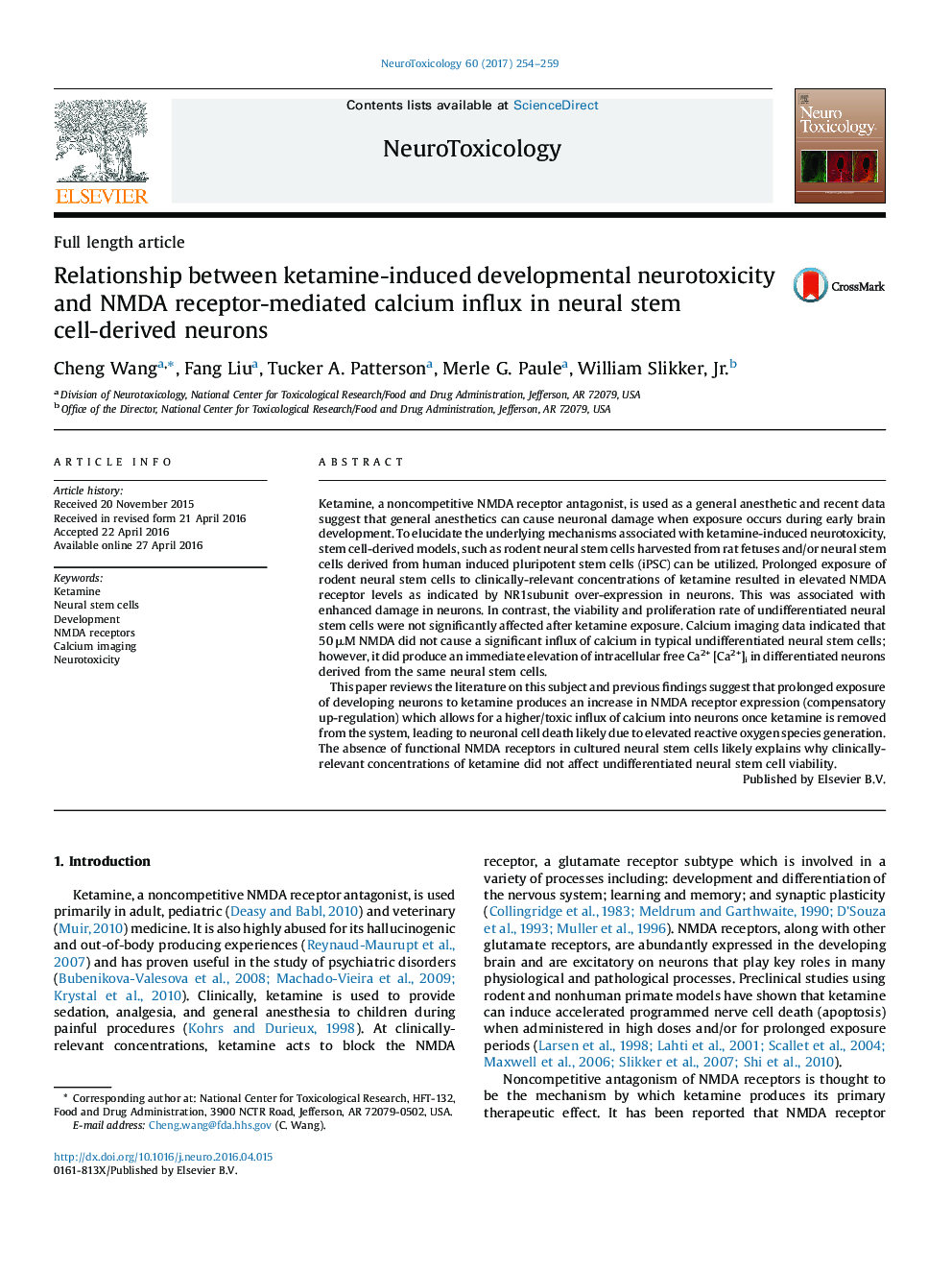| کد مقاله | کد نشریه | سال انتشار | مقاله انگلیسی | نسخه تمام متن |
|---|---|---|---|---|
| 5560847 | 1562034 | 2017 | 6 صفحه PDF | دانلود رایگان |

- This review discusses several advantages and presents information on neural stem cell related models and research approaches.
- The discussed hypothesis indicates a specific involvement of NMDA receptor-mediated excitation in ketamine-induced neurotoxicity.
- Continuous blockade of NMDA receptors by NMDA receptor antagonists causes a compensatory up-regulation of the NMDA receptor.
- This up-regulation could make cells bearing the receptors more vulnerable to glutamate by allowing for a toxic accumulation of [Ca2+]i.
- [Ca2+]i overload that exceeds the buffering capacity of mitochondria interferes with electron transport and elevated production of ROS.
Ketamine, a noncompetitive NMDA receptor antagonist, is used as a general anesthetic and recent data suggest that general anesthetics can cause neuronal damage when exposure occurs during early brain development. To elucidate the underlying mechanisms associated with ketamine-induced neurotoxicity, stem cell-derived models, such as rodent neural stem cells harvested from rat fetuses and/or neural stem cells derived from human induced pluripotent stem cells (iPSC) can be utilized. Prolonged exposure of rodent neural stem cells to clinically-relevant concentrations of ketamine resulted in elevated NMDA receptor levels as indicated by NR1subunit over-expression in neurons. This was associated with enhanced damage in neurons. In contrast, the viability and proliferation rate of undifferentiated neural stem cells were not significantly affected after ketamine exposure. Calcium imaging data indicated that 50 μM NMDA did not cause a significant influx of calcium in typical undifferentiated neural stem cells; however, it did produce an immediate elevation of intracellular free Ca2+ [Ca2+]i in differentiated neurons derived from the same neural stem cells.This paper reviews the literature on this subject and previous findings suggest that prolonged exposure of developing neurons to ketamine produces an increase in NMDA receptor expression (compensatory up-regulation) which allows for a higher/toxic influx of calcium into neurons once ketamine is removed from the system, leading to neuronal cell death likely due to elevated reactive oxygen species generation. The absence of functional NMDA receptors in cultured neural stem cells likely explains why clinically-relevant concentrations of ketamine did not affect undifferentiated neural stem cell viability.
Journal: NeuroToxicology - Volume 60, May 2017, Pages 254-259